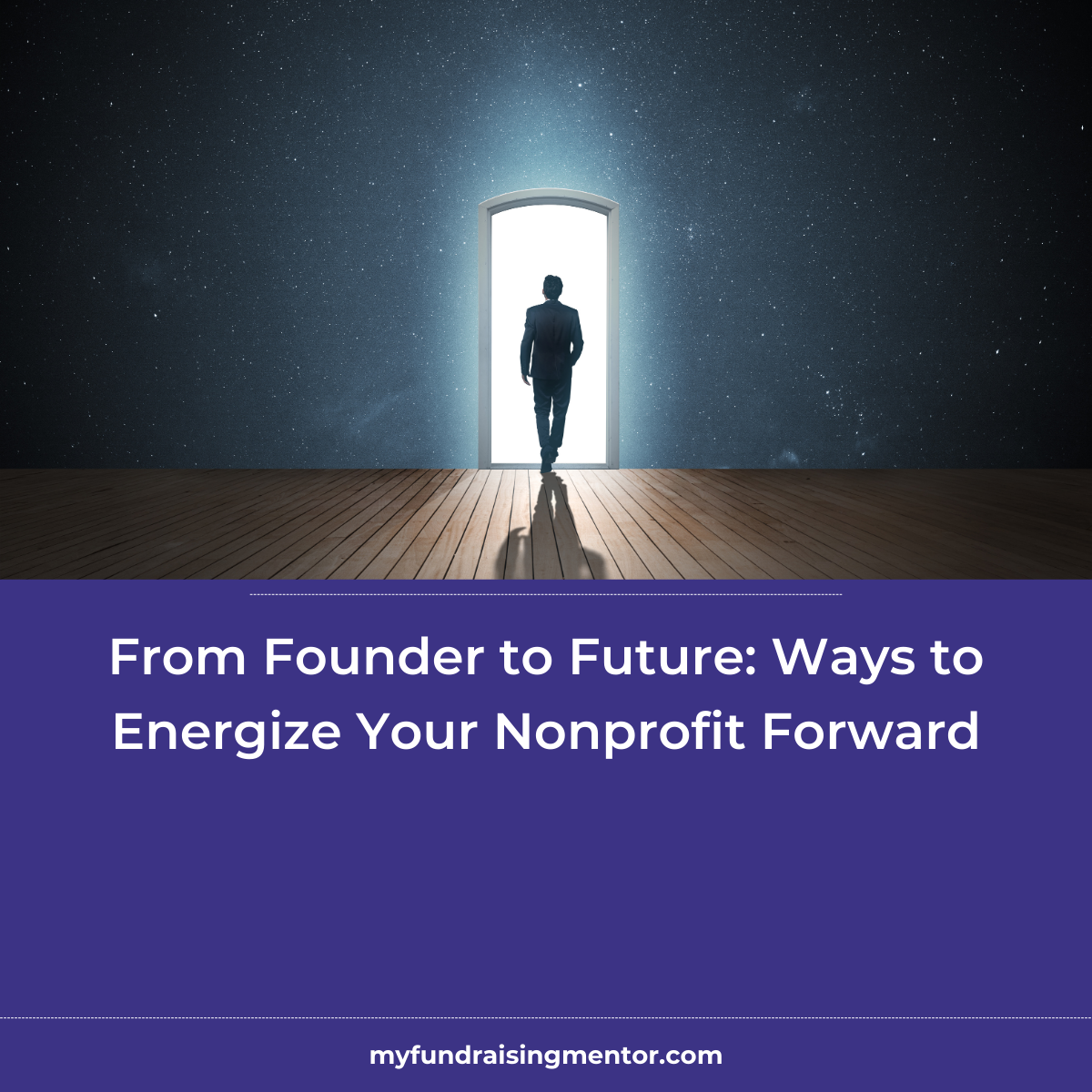From my experience, stress and tension between the Board of Directors, executive directors, and support staff in nonprofit organizations can stem from various factors. Understanding these causes can help organizations implement strategies to mitigate conflict and move the nonprofit forward.
One common pitfall is known as “founder’s syndrome.” This phenomenon occurs when a founding leader’s considerable influence stifles growth and adaptability, creating barriers to innovation. In various ways, founder’s syndrome can manifest when board members have long tenures and continue to support the founder’s ideas without questioning their relevance to the current community needs.
If your nonprofit is overly reliant on its founder’s vision, it might be time to explore strategies to energize your organization and ensure a sustainable future.
Consider the implications of a static organization. Programs stagnate, funding diminishes, and engagement wanes. This can lead to a disconnect between your nonprofit’s mission and the community’s needs. On the other hand, imagine a vibrant, dynamic organization where fresh ideas flourish and every member feels empowered to contribute toward a shared vision. Such organizations not only attract more support but also create lasting impacts.
So, how do we transition from being a founder-led organization to one that thrives beyond any individual? Here are several actionable strategies to rejuvenate your nonprofit and pave the way for its future success.From my experience, stress and tension between the Board of Directors, executive directors, and support staff in nonprofit organizations can stem from various factors. Understanding these causes can help organizations implement strategies to mitigate conflict and move the nonprofit forward.
One common pitfall is known as “founder’s syndrome.” This phenomenon occurs when a founding leader’s considerable influence stifles growth and adaptability, creating barriers to innovation. In various ways, founder’s syndrome can manifest when board members have long tenures and continue to support the founder’s ideas without questioning their relevance to the current community needs.
If your nonprofit is overly reliant on its founder’s vision, it might be time to explore strategies to energize your organization and ensure a sustainable future.
Consider the implications of a static organization. Programs stagnate, funding diminishes, and engagement wanes. This can lead to a disconnect between your nonprofit’s mission and the community’s needs. On the other hand, imagine a vibrant, dynamic organization where fresh ideas flourish and every member feels empowered to contribute toward a shared vision. Such organizations not only attract more support but also create lasting impacts.
So, how do we transition from being a founder-led organization to one that thrives beyond any individual? Here are several actionable strategies to rejuvenate your nonprofit and pave the way for its future success.
1. Establish Clear Governance Structures: A well-defined governance framework delineates roles and responsibilities among the board, executive director, and staff. This clarity prevents overlap and confusion, allowing everyone to work synergistically toward the nonprofit’s goals.
2. Encourage Diverse Board Membership: Seek out board members from various backgrounds and experiences. Diverse perspectives lead to fresh ideas and creative solutions, fostering an environment where innovation can thrive.
3. Foster a Culture of Open Dialogue: Encourage a culture where all voices are heard. Regularly schedule discussions that address governance and operational issues, allowing board members to share their thoughts without fear of backlash.
4. Engage in Strategic Planning: Involve the board and stakeholders in the strategic planning process to develop a vision that extends beyond the founder. This collective ownership inspires commitment and aligns the organization toward shared goals.
5. Promote Succession Planning: Prepare for future transitions in leadership by developing clear succession plans. Identify and mentor emerging leaders within your organization to ensure smooth leadership transitions.
6. Utilize Professional Development: Provide ongoing training for board members and staff to enhance their governance and management skills. This investment fosters confident leadership and empowers them to take on larger roles.
7. Engage an Outside Facilitator: Hiring a neutral facilitator for board meetings can keep discussions balanced and focused. This approach allows for authentic dialogue and addresses conflicts constructively.
8. Set Clear Performance Metrics: Establish measurable outcomes to evaluate the board’s effectiveness and the organization’s overall governance. Regular assessments can highlight areas that need improvement and encourage accountability.
9. Define Decision-Making Processes: Implement democratic voting protocols for important decisions to ensure every board member feels included and valued. This fosters a sense of ownership and shared responsibility.
10. Communicate the Mission Clearly: Regularly remind everyone within the organization of your nonprofit’s mission and core values. Engaging stakeholders in the conversation reinforces that the organization exists for the community it serves, not just for the founder’s vision.
Embracing these strategies can shift your nonprofit’s trajectory from founder-focused to a vibrant, community-driven organization. By implementing these changes, you can energize your nonprofit and create a brighter future where innovation flourishes, and the mission thrives.
Are you ready to take the next step in your nonprofit’s evolution? Start by discussing these strategies at your next board meeting. If you need an outside resource, contact me to help you empower your organization to achieve its full potential and make a lasting impact in your community. Remember, your nonprofit’s future is not solely defined by its founder but by the collective efforts of a dedicated team working toward a shared vision. Let’s move forward together!
Please email me for more information and a list of resources to assist you. Together, we can unlock your full potential in fundraising.
Pam Simmons, APR, CFRE, CTT is a Fundraising Consultant and Mentor with Coreniche Consulting Inc. in Winnipeg, Manitoba, offering strategic consultation, mentorship and training.


